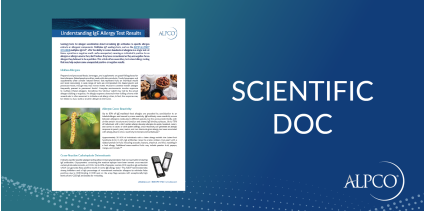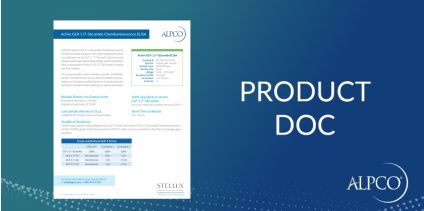Intact PTH ELISA (1-84)
$555.00
Catalog
21-IPTHU-E01
The Intact-PTH ELISA (1-84) is intended for the quantitative determination of Intact-PTH (Parathyroid Hormone) in human serum. Intact PTH assays are important for the differentiation of primary hyperparathyroidism from other (non-parathyroid-mediated) forms of hypercalcemia, such as malignancy, sarcoidosis, and thyrotoxicosis (1). The measurement of parathyroid hormone is the most specific way of making the diagnosis of primary hyperparathyroidism. In the presence of hypercalcemia, an elevated level of parathyroid hormone virtually establishes the diagnosis. FDA Registered. For In Vitro Diagnostic Use.
(1)Mallete, L.E., Gagel, R.F.: Parathyroid Hormone and Calcitonin. In: Murray J.F. (ed) Primer on the Metabolic Bone Diseases and Disorders of Mineral Metabolism. American Society for Bone and Mineral Research, Kelseyville; William Byrd Press, Richmond, pp. 65-69, 1990.
Species
Human
Regulatory Status
FDA Registered. For In Vitro Diagnostic Use.
Product Distribution
Available Worldwide
Range
7 - 700 pg/mL
Sensitivity
1.57 pg/mL
Sizes
96 Wells
Sample Types
Serum
Inc Time Hour
3
Inc Time Minute
30
Inc Time Overnight
No
Inc Time See Protocol
No
Sample Size
25
Detection
Colorimetric
The Intact PTH Immunoassay is a two-site ELISA [Enzyme-Linked Immunosorbent Assay] for themeasurement of the biologically intact 84 amino acid chain of PTH. Two different goat polyclonal antibodiesto human PTH have been purified by affinity chromatography to be specific for well-defined regions on thePTH molecule. The biotinylated capture antibody binds only the mid-region and C-terminal PTH 39-84. Thehorseradish peroxidase [HRP]-labeled detection antibody binds only the N-terminal PTH 1-34.
The Intact PTH 1-84 forms the sandwich complex necessary for detection by binding with both thebiotinylated capture antibody and HRP labeled detection antibody. The capacity of the biotinylated antibody and the streptavidin-coated microwell both have been adjusted to exhibit negligibleinterference by inactive fragments, even at very elevated levels.
In this assay, calibrators, controls, or patient samples are simultaneously incubated with the enzyme-labeled antibody and a biotin-coupled antibody in a streptavidin-coated microplate well. At the end of theassay incubation, the microwell is washed to remove unbound components. After washing, the plate isincubated with the substrate, tetramethylbenzidine (TMB). In the presence of HRP enzyme, TMBsubstrate is converted to a blue color. An acidic stop solution is then added to stop the reaction andconverts the color to yellow. The intensity of the yellow color is directly proportional to the concentrationof Intact PTH in the sample. A dose response curve of absorbance unit versus concentration is generatedusing results obtained from the calibrators. Concentrations of intact PTH present in the controls andpatient samples are determined directly from this curve.







